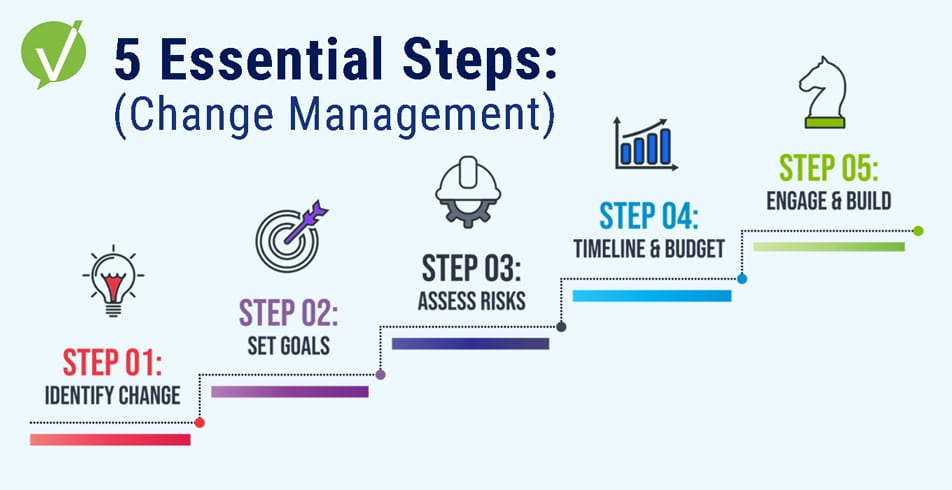Customer Service Management and Measurement: Observing and Measuring Customers in New Ways
There’s no question that customer service is important for any business. Happy customers are more likely to return and recommend your company to others, while unhappy customers can damage your reputation and even lead to lost revenue. In fact, customers who rate a company’s customer service as “good” are more likely to refer them to a colleague.
That’s why it’s essential to measure the effectiveness of your customer service management and measurement efforts and observe customers in new ways to get a better understanding of their needs.
Below, we’ll discuss methods for customer service management and measurement, as well as ways to observe customers to get a better idea of what they want from your business.
Pay Attention to the Average Resolution Time
One metric you can use to measure customer service performance is the average resolution time. This is the amount of time it takes your team to resolve a customer’s issue, from the moment they contact you until the problem is completely resolved. To calculate your average resolution time, you’ll need to track how long it takes to resolve each individual case.
Customer Service Management platforms should have some kind of Service Level Management capabilities that allow your teams to monitor and track every interaction.
Internally (or with the customer), Service Level Agreements (SLA) should be considered and agreed upon by the business. Milestones within the customer journey should be mapped. These include the first touch to response; think from initial response to team assignment, or from assignment to closed, or even from closed to customer accepted. This then allows every interaction to be assessed against these milestones and the business service levels.
How did you do? If you met all your service levels but the customer is not happy, then perhaps the milestones are too long. If you missed your service levels but customers are happy, perhaps your expectations are set too high, or the requests are too complicated to be solved within that time.
Through reporting and analytics, you now have the data you need to optimize the customer journey and the customer experience.
Using a customer service management platform can help companies leverage self-help portals, giving customers the tools to resolve simple issues and speak to customer service when a manual solution isn’t possible. All the data and insights you gain can be used to lower the Average Resolution Time, making your customers satisfied and happy to continue doing business with you.
Monitor Abandonment Rates
Another metric you can use to measure customer service performance is abandonment rates. This is the percentage of customers who contact your customer service department and then hang up before their issue is resolved.
Abandonment rates can be caused by a number of factors, including long wait times, unhelpful or rude customer service representatives, and complex interactive voice response (IVR) systems. With a customer service management platform you can easily monitor abandonment rates and keep them in check. Furthermore, with the adoption of a customer facing self-service, you might be able to provide solutions to your customers whilst they wait by letting them access and search your knowledge base.
Observe Customers in Their Natural Environment
In addition to tracking metrics, it’s also helpful to observe customers in their natural environment. This means watching them as they interact with your product or service without any intervention from customer service representatives.
This can be done in a number of ways, including customer surveys, focus groups, and user testing. Observing customers can give you valuable insights into their needs and how your product or service can be improved to better meet those needs. These needs can be interpreted through abandonment and resolution rate. Generally speaking, are customers getting what they need through your customer service department?
Determine Your Customer Effort Score (CES)
Another way to measure customer service performance is to determine your customer effort score (CES). This metric measures how much effort customers must put forth to resolve their issues.
CES usually asks: “On a scale from 1 to 5, rate how easy or convenient [company] made it for you to [resolve my issue/address a task that needed to be done]. Your CES score comprises the percentage of respondents that answered with a “4 – easy” or a “5 – very easy”.
CES surveys should be sent out immediately after an interaction, like a service ticket resolution. A customer service management platform can help you deploy customer surveys to determine your CES score and make meaningful internal improvements.
Consider Employing Customer Satisfaction Surveys (CSAT)
Customer Satisfaction Surveys (CSAT) offer a versatile way to measure how your customers are satisfied with your services and products and the overall relationship they have with you.
With questions that can evolve with your customers throughout their lifecycle, CSAT makes it easy to track your customers’ feelings and address satisfaction drops at all touchpoints.
CSAT often asks the base question: “On a scale of 1 to 5, how satisfied are you with [company/touchpoint]?” Measuring your CSAT is easy; merely calculate the percentage of respondents who gave a rating of “4 – Satisfied” or “5 – Very Satisfied.”
Modifying the CSAT to target your company at large or perhaps a specific touchpoint offers you a closer look into where your operations can improve. Additionally, adjusting its timing, whether directly after a particular interaction or on an annual basis, can yield valuable information about customer sentiment or satisfaction.
A customer service management platform can help you implement and send out CSAT to help you pinpoint how your customers feel about your company and its services and products.
Conduct Sentiment Analysis
Sentiment analysis of customer feedback helps determine your customers’ overall sentiment, or attitude, towards your company.
Consider using Net Promoter Score (NPS) surveys to gain an understanding of customer sentiment, which ties into building long-term customer loyalty and retention.
NPS asks this simple question: “On a scale from 0 to 10, how likely are you to recommend [company] to a [colleague]?” The scoring methodology of NPS uses grouping to segment your respondents into three distinct categories: promoters (scores of 9 to 10), passives (scores of 7 to 8), and detractors (anyone ratings of 6 or less).
To calculate the NPS, subtract the promoters from the detractors. Your NPS can range anywhere from -100 to 100.
Once you’ve conducted sentiment analysis, you’ll be able to see how customers feel about your company as a whole, as well as specific aspects of your customer service. Sentiment analysis data can go a long way towards grading customer service representatives and making the necessary internal adjustments.
Factoring In and Preventing Customer Churn
Finally, you’ll want to factor in customer churn when measuring customer service performance. Churn, also known as attrition, is the percentage of customers who stop doing business with you over a period of time.
Customer churn can be caused by several factors, including poor customer service. Therefore, it’s essential to track your churn rate and determine if the service or support they received might have been a poor experience. Check if SLAs were met or breached. See how many tickets or requests were being logged. Of the ones logged, what were they for – bugs, downtime, missing features?
Using all of this, you can garner information about how a customer might have left from how they interacted with you. So while surveys and focus groups won’t let you measure and track your churn rate, they will help explain your churn rate.
Not all churn is terrible, but expansion is vital within your existing customer base, especially in a B2B environment. Having growth in your customer base is crucial to counteract churn. Churn can never be totally prevented, especially if you’re only losing customers who were not your ideal customers in the first place.
But focusing on your ideal customer, growing that base (new and existing customers), and turning that customer base into advocates of your product or service is critical. Otherwise, net churn will constantly erode any further business expansion you make. New business expansion needs to go hand and hand with Net Revenue retention to ensure you are growing and not fighting a losing battle with retaining your existing customers.
Where Vivantio Comes In
Measuring the effectiveness of your customer service department can ultimately be done through tangible metrics, data, and keen observation. To streamline the measuring process, look for customer service management platforms that offer a range of features and the ability to give your organization better insights into customer behavior and satisfaction.
Vivantio assembles every aspect of customer service management into one, intuitive platform, giving you the ability to revamp your internal processes gradually.













